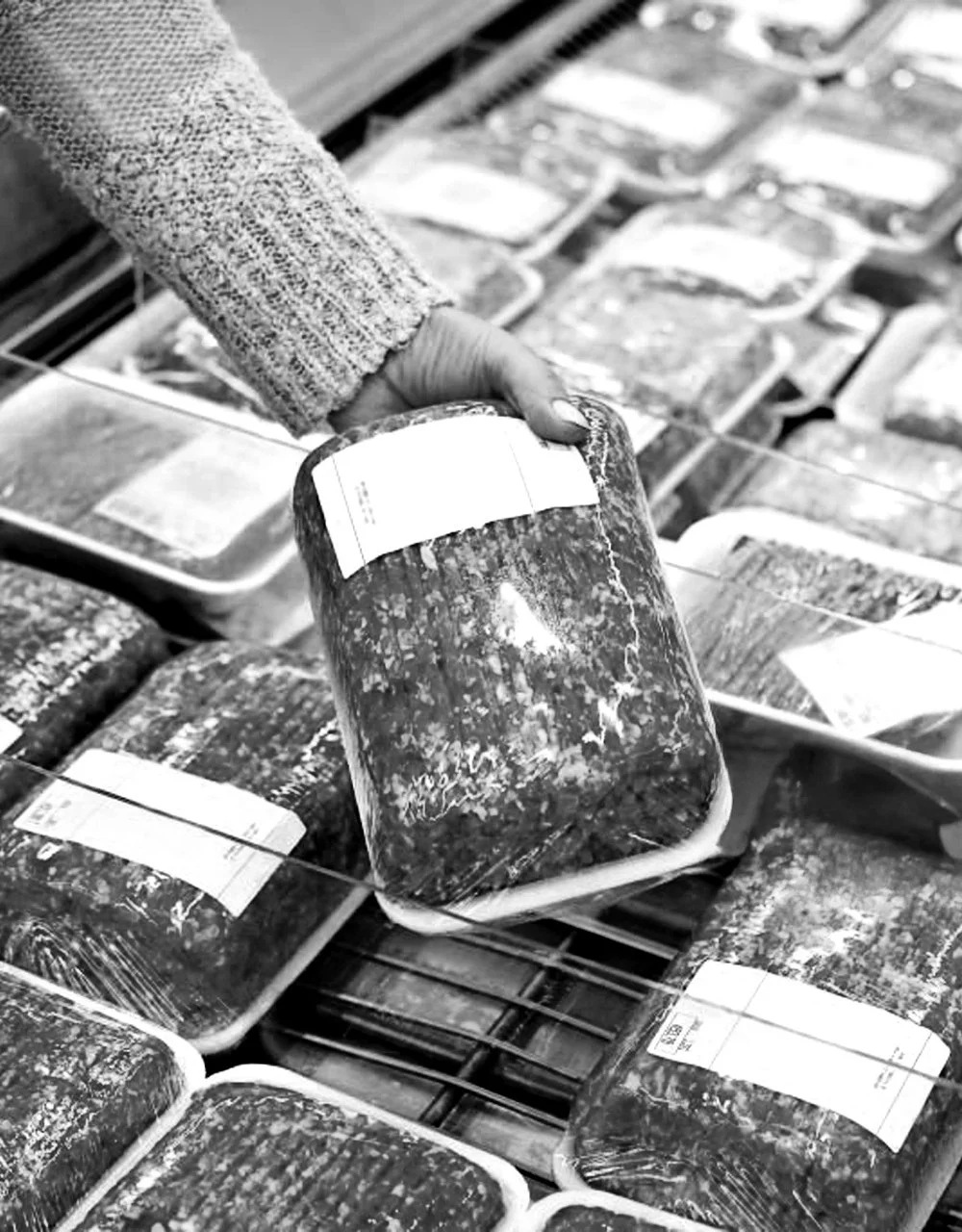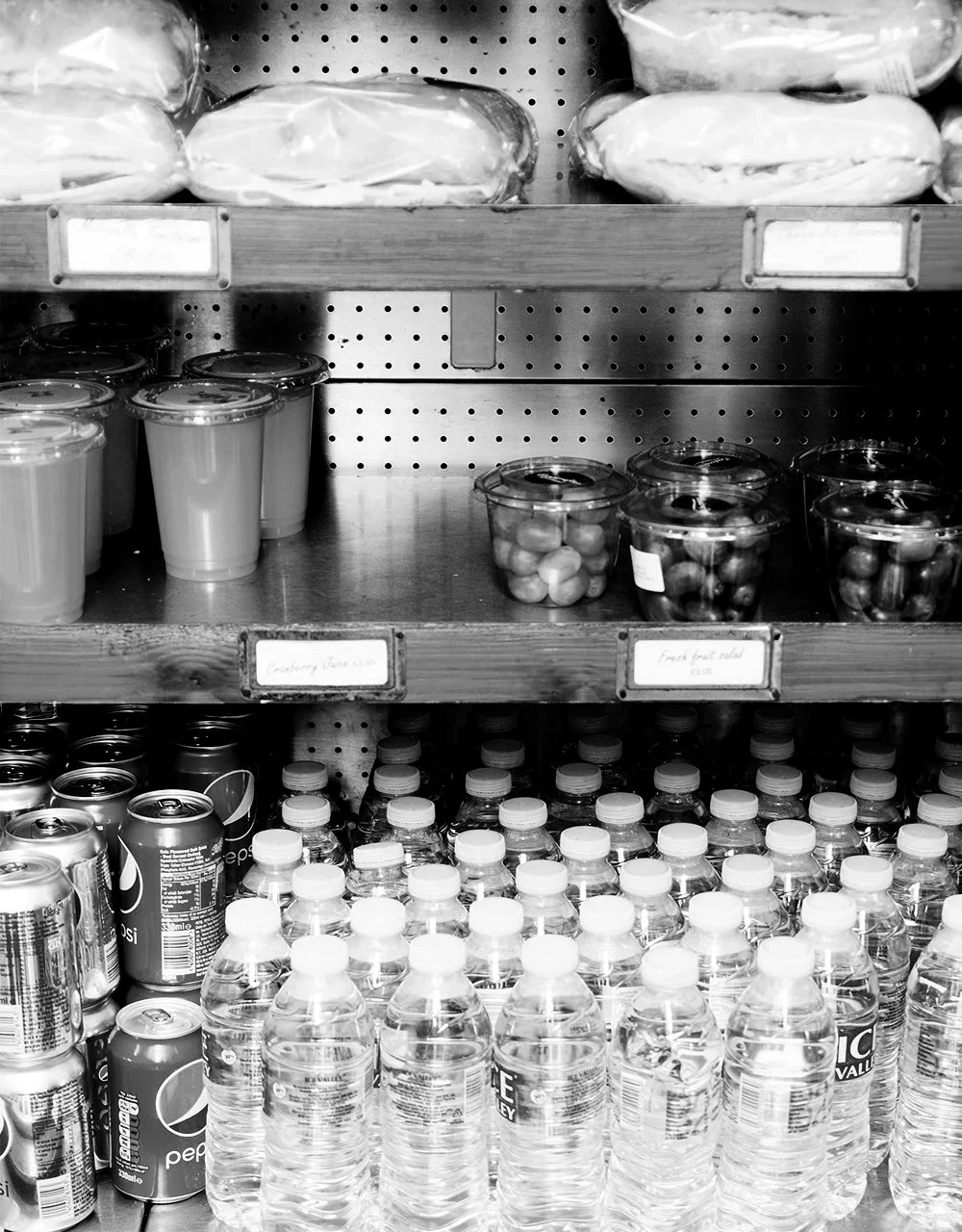Parley AIR: Ways to Ingest Less Plastic
Microplastics and plastic chemicals are in our food and in our water. Is there any way to avoid them?
Microplastics are in the Arctic Circle and the Mariana Trench, and in the clouds, air, water and food, so it’s no surprise that they’re in us, too. Natural materials like cotton, wood and paper eventually break down into soil. Plastic, on the other hand, breaks apart into microscopic pieces that get swept up by wind and water to effectively every corner of our planet. The average person ingests 50 plastic bags worth of microplastics every year. Tiny bits of plastic hide in 99% of seafood and in salt, beer, and water (even if it’s not packaged in plastic). Our food system itself is a huge source of plastic pollution.
So far, researchers have found microplastics in virtually every organ in the human body. They’re also in plaque build-up in arteries, in human bloodstreams, brains and placentas. Scientists are just now beginning to understand what these do to human health, but most agree it likely isn’t good. We also know the chemicals in these tiny bits of plastic have been linked to a host of health issues, including reproductive abnormalities and decreased fertility.
This AIR Guide is all about reducing the amount of microplastic you’re ingesting. While it’s virtually impossible to completely avoid eating and drinking microplastics—or even tinier nanoplastics—you can reduce your exposure. The best place for that is to start in the kitchen.
Take the Parley AIR Pledge and receive our newsletter
PLASTIC IN OUR FOOD
Recent studies have tested common foods in grocery stores for microplastics and the chemicals they harbor. It’s both alarming and a bit unsurprising that they found them in just about everything.
A study that focused on protein sources –– things like seafood, chicken nuggets, steak, ground beef, pork and tofu –– found microplastics in all 16 foods they tested. Processed meat and seafood, as well as plant-based nuggets, had the highest number of microplastics, which might point to food processing as another source of microplastics, the researchers thought.
A report from PlasticList tested 705 samples taken from 296 different foods bought in the Bay Area of California. Their goal was to see 18 types of common plastic chemicals would show up in the foods their friends typically ate.
The list included common staples, like sodas, water, milk, yogurt, produce, LaCroix, snack and protein bars and even fast food. But also food from popular up-scale places like Blue Bottle coffee, Salt & Straw ice cream and Tartine sourdough bread.
They found at least one of the chemicals in 86% of the foods they tested. This included raw milk and beef straight from farms, 22 organic foods and 20 healthy groceries from Whole Foods. Hot foods that spent 45 minutes in plastic takeout containers had 34% higher levels of chemicals.
Those that most commonly contained phthalates, which research has found may be endocrine disruptors, include:
Prenatal vitamins
Baby food
Baby formula
Bottled water
Popular coffee chain drinks
Fast food and food from chain restaurants
Those that included the highest amounts of Bisphenol A (BPA) included:
Boba tea with pearls
Tap water
Sustainably caught canned albacore wild tuna
SPAM
Boxed organic macaroni & cheese
Know your plastics
If microplastics are already in so many foods, what can you do?
Let’s go back and start from the beginning, the very source of microplastics. We can all recognize single use plastic grocery bags, bottled water and takeout cutlery and egregious sources of plastic pollution, but what may be less obvious is the fact that not all plastic can be recycled.
Things like coolers, car parts and electronics are made out of hard thermoset plastics. Unlike PET (Polyethylene Terephthalate), the plastic in plastic bottles, this type of plastic is chemically set in its shape. Thermoset plastics account for about 75% of all plastic humans create. They almost never recycled and turned into something new because thermoset plastic burns before it can be melted down and remolded.
Thin plastic films like cellophane and plastic bags require special recycling systems, so most of the time, these types of plastic end up in the trash, too. The same is true for styrofoam and clothing made from synthetic fabric, which makes up about 14% of plastic litter. Bioplastics aren’t a perfect solution, either.
Instead of entering the global recycling system—which has problems of its own—these products end up in landfills (or our forests, rivers and oceans) and have the chance to break apart into trillions of microscopic pieces. These pieces get carried by wind and water to virtually every part of our planet. They also end up in our food. Not just meat and seafood, but the soil that grows our vegetables and grains. In 2021, the Food and Agriculture Organization of the United Nations published a report that stated there is now more microplastic pollution in Earth’s soil than in its oceans.
Avoiding all plastic is essential, but that goes double for plastics that are difficult or impossible to recycle. To reduce the amount of microplastics in our bodies, we have to start by reducing the amount of new microplastics being created. You can also make decisions in the kitchen to avoid adding any additional microplastics to your food.
If you can, do not drink bottled water
In some parts of the world, tap water isn’t safe to drink. That makes avoiding bottled water much more difficult than in places like the U.S., Canada and Europe, where drinkable tap water is usually easy to come by. If you have access to potable tap water, always choose drinking that over bottled water. It’s true that even tap water contains some microplastics, but a study published in 2025, scientists estimated that switching from bottled water to filtered tap water could reduce the amount of microplastics you’re drinking in water by 90% — from 90,000 to 4,000 bits of microplastic per year. If you are able to switch to tap and want to go a step further, certain water filters can reduce (but not totally eliminate) larger microplastics from tap water. You can also consider using glass baby bottles instead of plastic. Just note that not every drink that comes in a glass bottle is plastic-free: a study by France’s food safety agency found the paint on glass bottles’ metal caps is a surprisingly potent source of microplastics in drinks.
Try not to use plastic food containers
Any time your food touches a plastic container, utensil or plate, it potentially picks up microplastics. Scientists believe the situation is even worse when that food is hot.
Even containers designated as “microwave safe” shed microplastics (and the chemicals they harbor) into food. For this reason, you should always remove hot takeout food from plastic containers as soon as you get it home and put it into a glass or metal food storage container, or a bowl or plate. Store it that way, too, and opt to reuse any plastic containers you can’t avoid for non-food stuff (like organizing your junk drawer, garage, sewing room, etc.). While this isn’t always an option if you get takeout, you can always bring your own non-plastic storage containers to restaurants to bring home any leftovers.
Shopping for food is likely going to be more of a ‘do your best’ situation. Avoiding plastic containers at the grocery stores is insanely difficult, but every little bit counts. Buying as much fresh food as you have available to you can make a big difference – most ultra processed food comes in plastic packaging, so a good place to start to cut out your microplastic exposure through food is to eat as many fresh or unpackaged foods as you can. Avoid grocery stores that wrap their produce in plastic and buy loose heads of lettuce when possible instead of bagged salads. Sometimes plastic packaging is sneakier, like when it’s used to make tea bags –– plastic tea bags turn your tea into microplastic soup –– and when cans are lined with plastic, so keep an eye out for that, too.
Use wooden cutting boards
Plastic cutting boards are an egregious source of plastic in the kitchen and another place where non-plastic alternatives are readily available. Use wooden cutting boards instead, but be mindful of cutting boards made from recycled wood that may have been previously treated with chemicals such as varnish.
Use uncoated pots and pans
Most nonstick cookware has a polytetrafluoroethylene (PTFE) coating, a type of plastic you likely know as Teflon. It’s also a forever chemical. One study by Australian researchers found that a Teflon pan can release millions of microplastics during a single use, especially if that coating is scratched or flaking off. Instead of nonstick pans, look for ones made from ceramic, stainless steel, tin, copper or cast iron.
Carry a reusable cutlery set
It’s easy enough to use non-plastic spoons and forks when you’re at home, but it can be harder if you’re grabbing takeout to eat in the park or dining at a restaurant that uses disposables. There are a ton of good options for reusable cutlery that’s super portable, from metal sporks to bamboo spoon, fork and knife sets. If you make a habit of carrying one of these in your bag, you’ll always have a better alternative to plastic when dining out.
De-plastic your parties
You can’t always control the amount of plastic you’re exposed to at other peoples’ houses, but when you have people over to yours (or host a get together anywhere), try your best to use reusable, non-plastic plates, glasses and utensils. If you feel you do need to go with disposables, go with those made from paper or bamboo. Bioplastic cups in particular are getting much easier to find –– here’s what you should know about those.
Build your microbiome
It can feel completely overwhelming when avoiding plastic seems to be the only thing you can do to protect yourself against the health harms these particles pose. That’s an important part of the equation, but some early research also suggests that building up your good gut bacteria could help mitigate how much harm microplastics inside your body can do.
Most of this research has been conducted in the lab or in rodents. This type of research cannot always be applied to humans, but it’s the place that researchers start when looking into how well different interventions might protect human health. What is clear is that probiotics appear to be able to reduce harmful plastic chemicals in the food itself.
In a 2019 study, Chinese researchers added a probiotic bacteria called Lactobacillus reuter to tea and orange juice that was packaged in BPA. After just one day, the amount of BPA in the food was reduced by more than 92%. After 27 days, it was zero. The bacteria was added to the food itself, not to a person’s GI tract. For that reason, it’s still completely unclear whether eating more foods that contain Lactobacillus reuter, such as yogurt, kefir, sauerkraut, kimchi, tempeh, olive oil and sourdough bread, would have any effect on eliminating BPA in the body. These foods also contain vastly different amounts of Lactobacillus reuter, whereas the study used a set amount.
A similar 2020 study by Iranian researchers found that two probiotics found in yogurt, Lactobacillus acidophilus and Lactobacillus plantarum, reduced BPA in the food after four weeks. The yogurt with Lactobacillus acidophilus had 82% less BPA after four weeks. Yogurt with Lactobacillus plantarum had a 42% BPA reduction. The same stipulations apply to this research, but again, it’s a good place to start when searching for ways to protect humans from the harmful chemicals in plastic. This research, and what scientists understand about the gut microbiome in general, suggests that at the very least, eating probiotic foods isn’t harmful, and is likely a way you can help protect your body against some toxins, even if those aren’t from plastic –– just be careful not to buy into expensive supplement trends or trendy foods, which don’t always help.
TAKE ACTION
Read up, make noise, spread the word and give others the tools to do the same. Systemic change won’t come unless we demand it.
IG @parley.tv | FB @parleyforoceans
#ParleyAIR









































